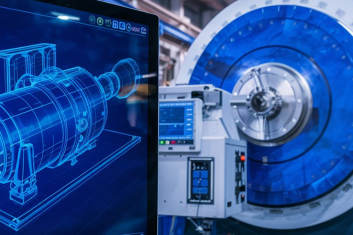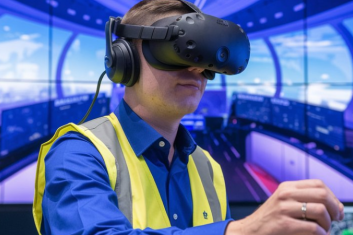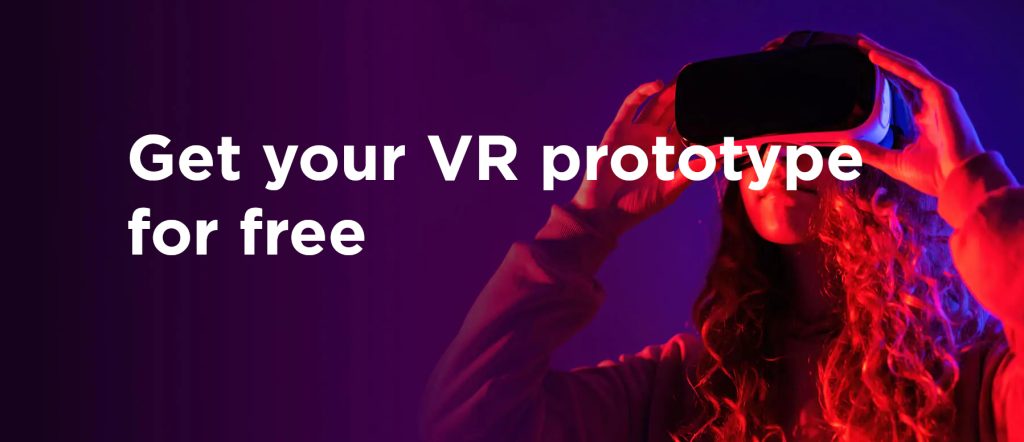Consistency of Information Delivery
AR/VR app development services have already gained widespread adoption in the workplace. Projections indicate that 23 million jobs will use AR/VR for training, meetings, and product development by 2030.
To fully leverage the benefits of AR/VR for training, you need to address several problems with Augmented Reality and Virtual Reality, including:
- сonsistency of information delivery;
- confusing user experience;
- physical limitations;
- steep learning curve;
- hardware restrictions;
- initial costs;
- emotional resistance.
Having participated in the development of over 20 educational programs, I’ll share with you the most common VR/AR challenges in training and some ways to overcome them.
Consistency of Information Delivery
Approaching AR/VR training without thorough educational design can result in a collection of low-interactivity videos, negating all the unique benefits of these technologies.
As the educational design lead at HQSoftware, I organize learning materials to provide comprehensive information without overwhelming users and allow for maximum practice, all within a limited timeframe.
Want to create an AR/VR solution for employee training? We’re ready to help!HQSoftware has a team of skilled professionals ready to tackle the project. Ask me!
Anna Halias
Business Development Manager
Time management is a tricky part of educational design. For example, teaching a nurse how to enter a room correctly takes about 3 minutes in the physical world. In VR, this timeframe increases by 3-4 times, as the user needs to learn how to interact with this virtual experience, then observe theoretical information, practice it, and assess results.
The other essential thing is to cooperate with subject-matter experts in crafting an educational script in the process of designing and developing AR/VR training.
For example, when we built VR occupational training that includes cooking classes, it was important to mirror real-life actions that a chef might take, down to the precise hand positioning while slicing vegetables. Only with this level of detail can learners master the required hands-on skills.
Confusing User Experience
With VR training, you need to pay special attention to placing interactive elements within the VR environment, ensuring intuitive navigation.
In traditional educational materials using computers or mobile phones, the elements are placed in a way that we are used to, not causing extra difficulties. In VR, with its 360-degree environment, we can place elements anywhere.
Some examples of mistakes in UX/UI design for AR/VR include:
- requiring users to perform multiple gestures or commands to access essential features;
- placing the main navigation elements, such as buttons and tooltip, out of the user’s field of view or too close to each other, complicating the selection of the intended one;
- failing to provide visual cues like shadows or lighting effects, making it challenging for users to accurately judge distances or spatial relationships between objects;
- not ensuring alternative interaction methods for users with mobility impairments; and more.
Avoiding these mistakes, you can build intuitive interactions that are clear to users, increasing training outcomes.
Physical Limitations
People who aren’t accustomed to Virtual Reality may struggle with wearing a headset at first, experiencing motion sickness or headaches. It may take several attempts for them to adapt to VR.
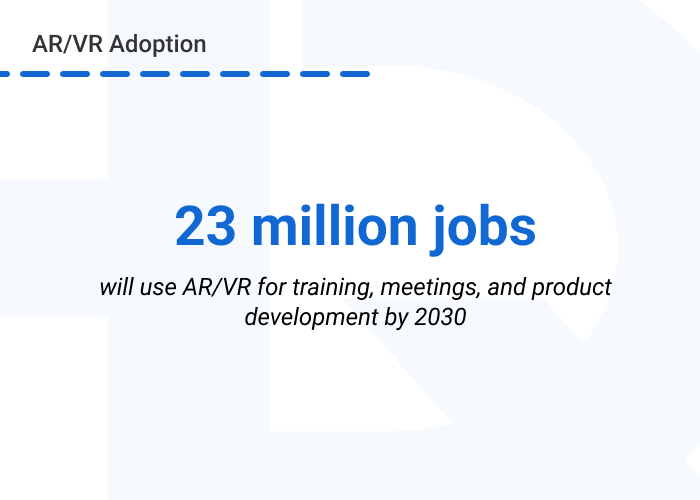
This physical barrier limits the length of VR training. Training material should be divided into smaller pieces so that learners of varying experience can freely participate in simulations without physical limitations.
Additionally, to overcome this problem with Virtual Reality, training should run at smooth frame rates, ideally 90 frames per second or higher, and utilize high-quality graphics.
Steep Learning Curve in Dealing with Hardware
First-time users typically face difficulties using VR hardware, e.g. controllers, even with detailed educational tutorials. So, more time is required for users to get acquainted with the technology. To avoid this, you may include navigation tooltips during simulations, when users are unable to perform a required action for some time.
Combining this Virtual Reality issue with the previous challenge of physical side effects may prolong the learning curve, necessitating multi-segmented training programs to accommodate users’ needs.
Hardware Restrictions
We face problems with Virtual Reality when it comes to achieving consistent performance and display quality across VR headsets, particularly with standalone devices.
Companies not familiar with VR may model their training expectations based on VR computer games. However, such games are usually displayed on headsets that are connected to gaming PCs. Achieving such a smooth performance while maintaining a detailed environment in standalone devices is almost impossible.
How do modern businesses use AR to increase their revenues and outperform their industry competitors?
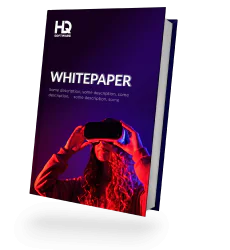
This challenge of Virtual Reality is gradually being eliminated with advances in hardware. As an example, our developers say the new headset Meta Quest 3 has twice the capability of Meta Quest 2 while remaining reasonably priced, enabling more companies to experience high-quality performance.While hardware is out of our control, we can optimize the virtual experience itself. In one of our projects dedicated to dementia diagnosis training in VR, we had to simplify textures, environments, characters, and ongoing iterations to achieve seamless performance on a headset.
That’s why it’s essential to choose a VR training development partner who understands the nuances of working with VR and can deliver effective solutions aligned with current technological capabilities.
Initial Costs
AR/VR training is cost-effective in the long run, saving you the typical cost of a physical classroom, gathering trainees, and providing experienced instructors. However, it involves high upfront costs on hardware and a development team to build immersive training, possessing the knowledge to deal with various problems with Augmented Reality and Virtual Reality training.
For example, the custom AR app that includes login and registration, an AR content catalog, third-party APIs, and back-end features and requires a development team of 5 specialists can cost about $63,000 depending on the features’ complexity.
While AR training costs may be lower, VR’s immersive capabilities may be necessary for certain training objectives. That’s why companies may face a dilemma about whether to choose AR or VR for training.
Emotional Resistance
Some people still worry about how they look to others while interacting with AR/VR, limiting themselves from exploring the full potential of these technologies.
We encountered this challenge of Virtual Reality for ourselves at a conference where we had a stand demonstrating our internally developed project Bodyscope — a tool for visualizing MRI/CT scans in VR. Anyone there could try out the solution by wearing a VR headset.
While there was significant interest in the technology, not everyone dared to try the new experience. Those who did often stopped as soon as they encountered difficulties, particularly older individuals.
The ability to undertake VR training remotely, from the comfort of their own homes, can help learners overcome this hesitancy. I also think that there may be less emotional resistance when users train in groups where headsets are worn by everyone.
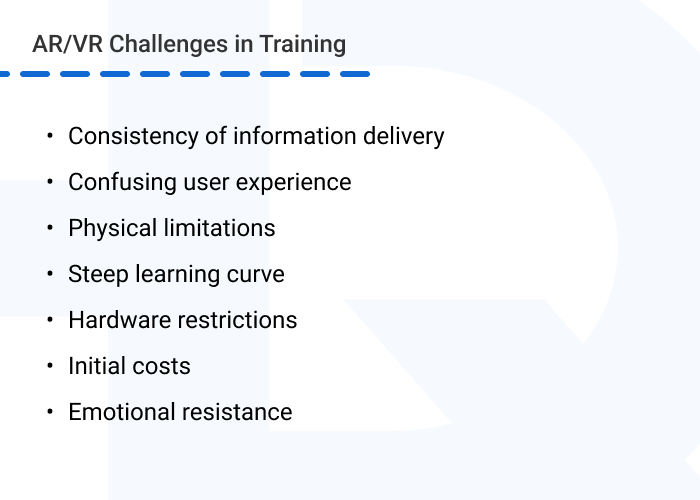
With all these VR/AR challenges, training this way may seem like an overwhelming and expensive option. However, with the right approach and an experienced team, all challenges can be overcome.
Building Tailored AR/VR Training Solutions
At HQSoftware, we figure out how to surmount most of these issues when working on AR/VR projects for our clients. Experience has given us the knowledge to build top-notch AR/VR training by:
- thoroughly crafting an educational design with subject-matter experts;
- creating intuitive interactions and user-friendly UI/UX design;
- balancing the quality of the virtual experience with smooth display on VR headsets;
- using proven project management practices to provide project deliverables according to the roadmap;
- providing detailed tutorials on how to interact with a virtual experience and, if required, additional training.
Contact us to build AR/VR training tailored to your needs, that can overcome challenges and achieve your educational objectives effectively.

Educational Design Lead
Professional with over 20 years of experience in sales, marketing, and management across diverse industries, including education and consulting services. Adept at developing new educational products and services.
Get Your VR Prototype For Free
Visit PageDid you like
the article?
Subscribe
for more!
Related Posts
View All
We are open to seeing your business needs and determining the best solution. Complete this form, and receive a free personalized proposal from your dedicated manager.

Sergei Vardomatski
Founder




